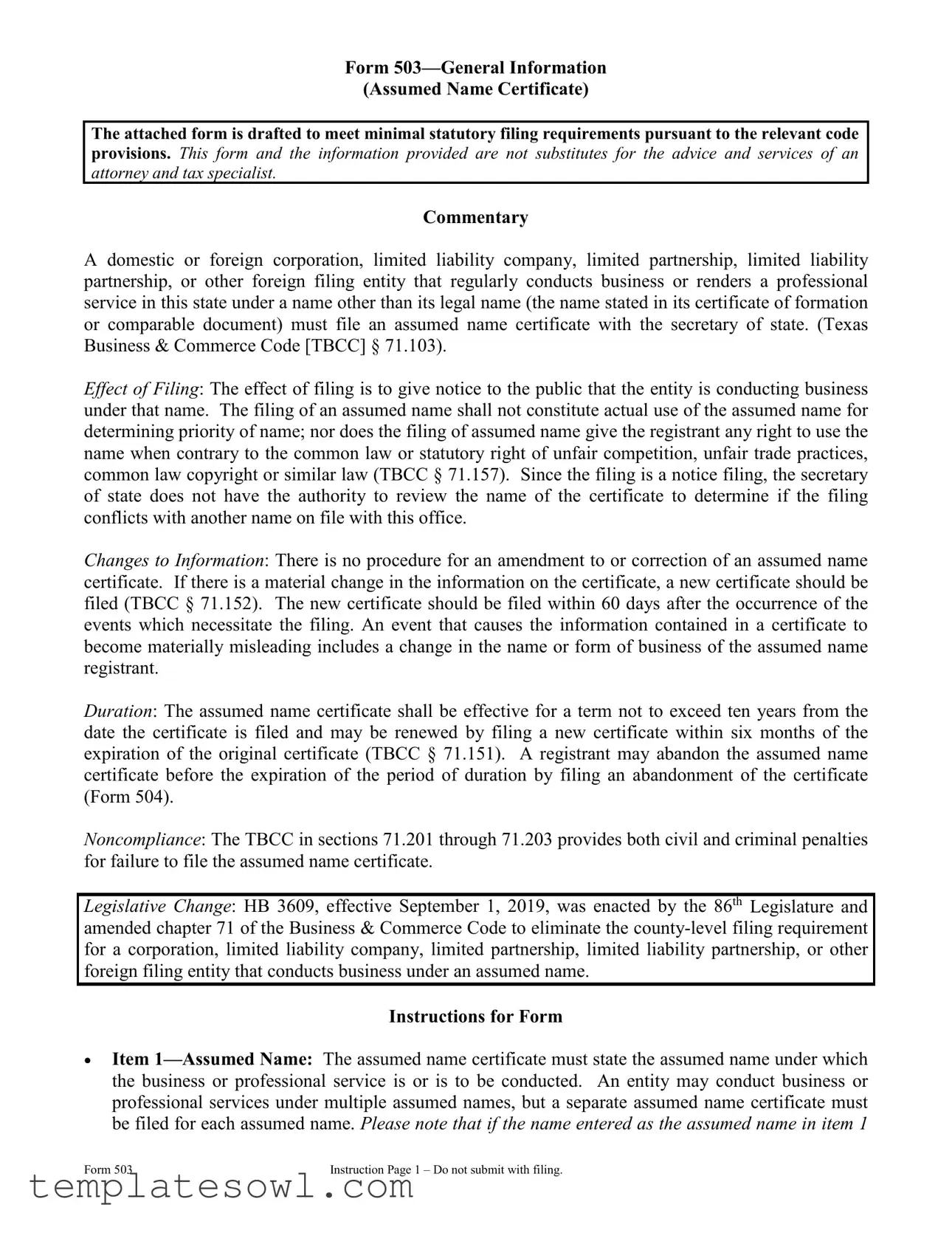is exactly the same as the legal name of the entity on file with the secretary of state, the certificate will be rejected for failing to provide an assumed name.
•Item 2—Entity Name: The assumed name certificate must contain the legal name of the entity as contained in its certificate of formation or comparable document filed with the secretary of state. An incorporated entity, such as a bank or trust company, whose organizational documents are not filed with the secretary of state, would set forth the legal name of the entity as contained in its organizational documents.
•Items 3 and 4—Type of Entity and File Number: Identify the type of entity that is filing the assumed name. If there is not a check box that applies to the entity, check “other” and then specify the type of entity in the space provided. It is recommended that the file number, if any, assigned by the secretary of state be provided to facilitate processing of the document.
•Item 5—Jurisdiction: The certificate must state the jurisdiction of formation of the entity filing the assumed name certificate.
•Item 6—Principal Office Address: Provide the street or mailing address of entity’s principal office.
•Item 7—Period of Duration: An assumed name certificate is effective for a term not to exceed a period of ten years from the date of filing the certificate. Check the applicable box to specify the duration which the entity determines should be the duration of the filing of the assumed name certificate. The entity may opt to make the duration the maximum period of ten years, a period of less than ten years or until a date certain which date is not more than ten years from the date of filing.
•Item 8—County or Counties in which the Assumed Name Used: The assumed name certificate is required to state the counties in which the assumed name will be used. If the entity will potentially use the assumed name in all counties in Texas, check the box for “All.” If the entity wishes to exclude certain counties but will use the assumed names in most counties, check the box for “All counties with the exception of the following counties” and list the excluded counties. If the entity will only conduct business in specific counties, check the box for “Only the following counties” and list those specific counties.
•Execution: A certificate filed with the secretary of state shall be executed by an officer, general partner, member, manager, representative of or attorney in fact for the corporation, limited partnership, limited liability partnership, limited liability company, or foreign filing entity. A certificate executed by an attorney in fact shall include a statement that the attorney in fact has been duly authorized in writing by the principal to execute the certificate. Please review the form carefully. Pursuant to section 71.203, a person commits an offense under section 37.10, Penal Code, if the person intentionally or knowingly signs or directs the filing of an assumed name certificate that the person knows contains a materially false statement.
•Payment and Delivery Instructions: The filing fee for an assumed name certificate filed with the secretary of state is $25. Fees may be paid by personal checks, money orders, LegalEase debit cards, or American Express, Discover, MasterCard, and Visa credit cards. Checks or money orders must be payable through a U.S. bank or financial institution and made payable to the secretary of state. Fees paid by credit card are subject to a statutorily authorized convenience fee of 2.7 percent of the total fees.




 Other
Other 7a. The period during which the assumed name will be used is 10 years from the date of filing with the secretary of state.
7a. The period during which the assumed name will be used is 10 years from the date of filing with the secretary of state.